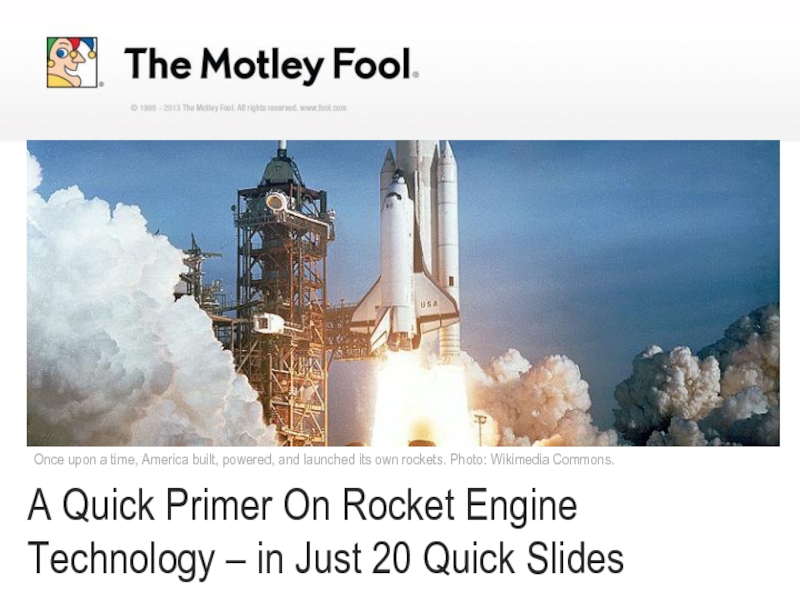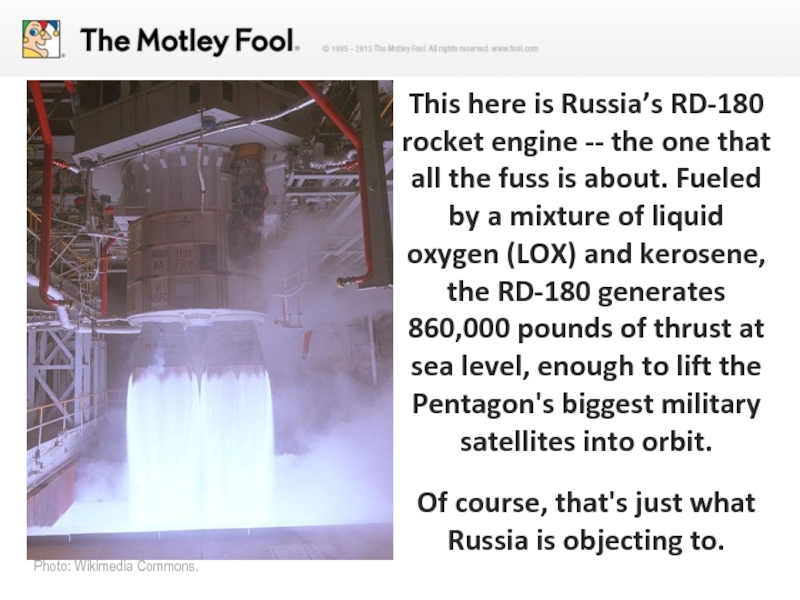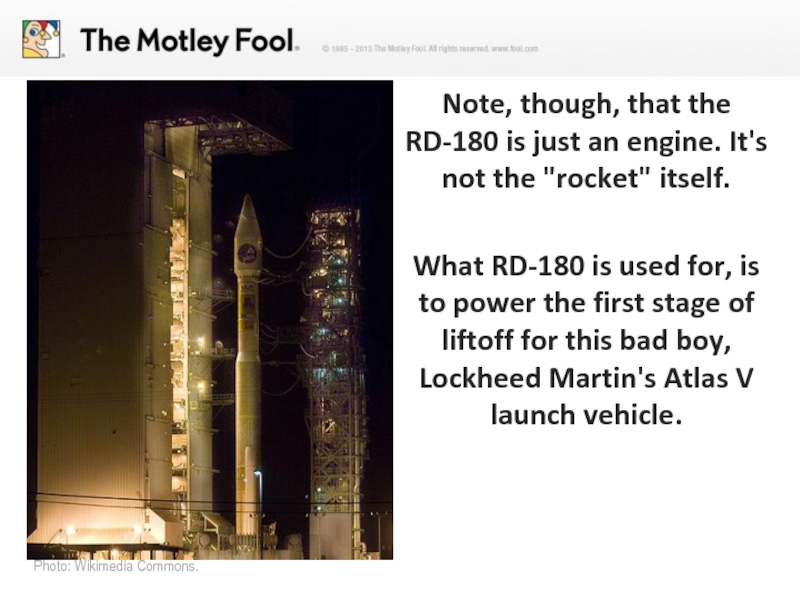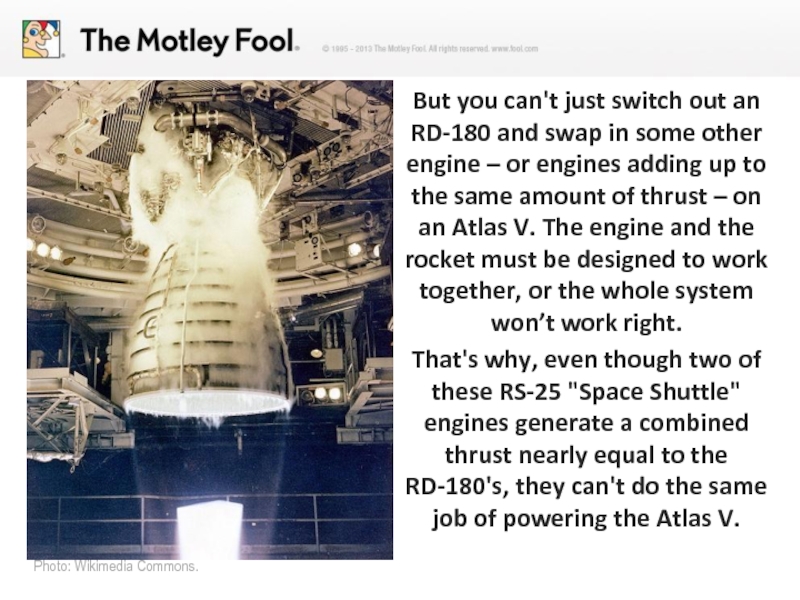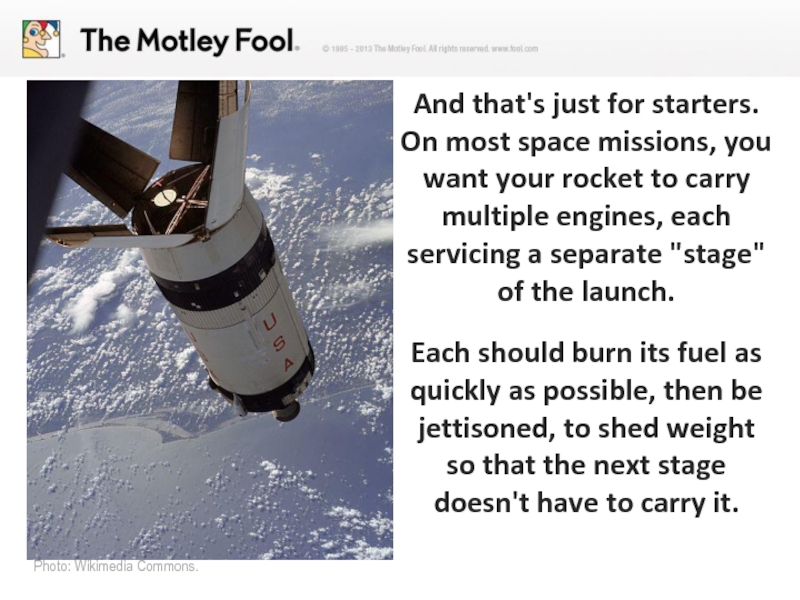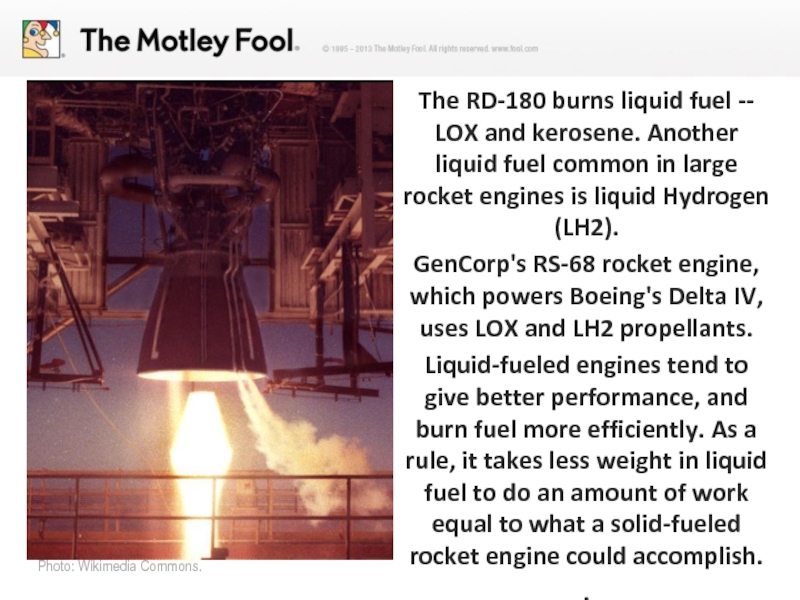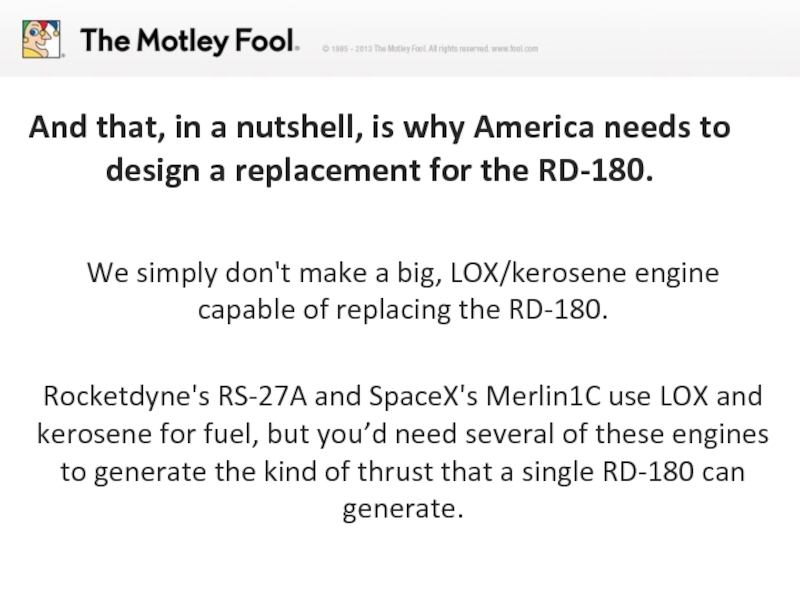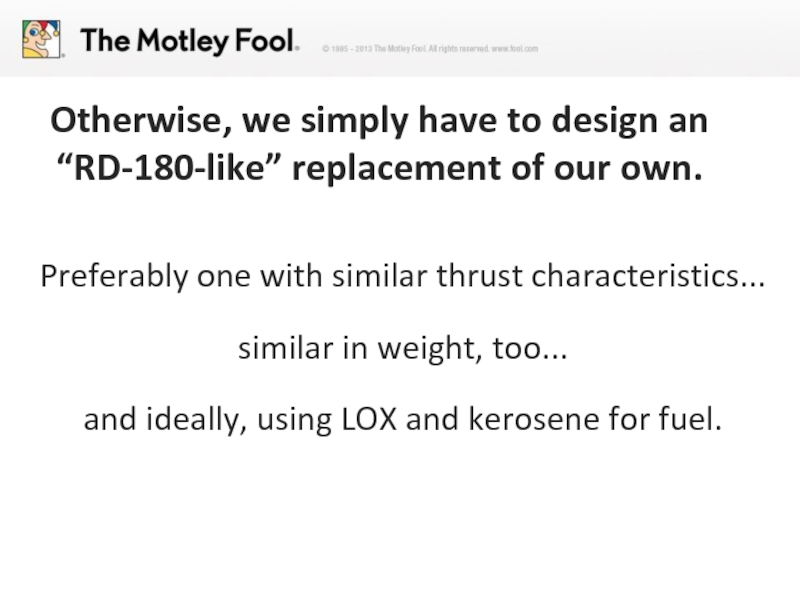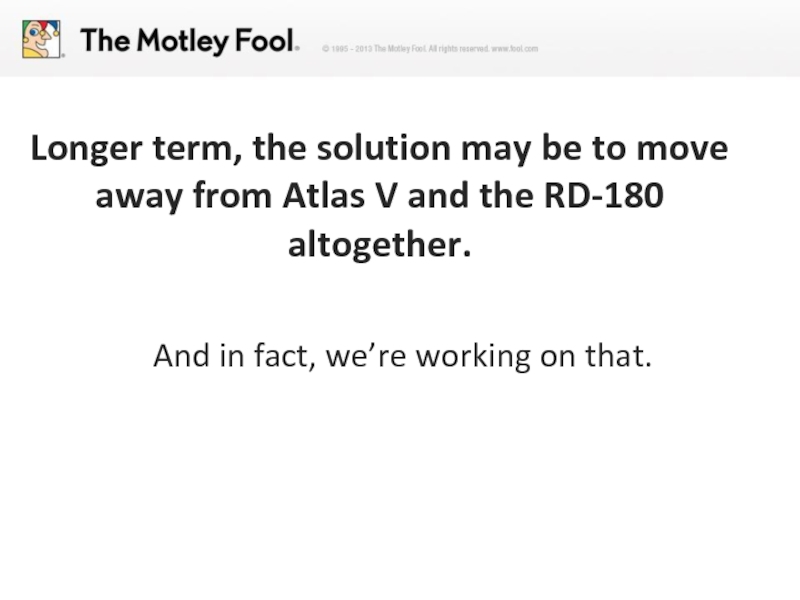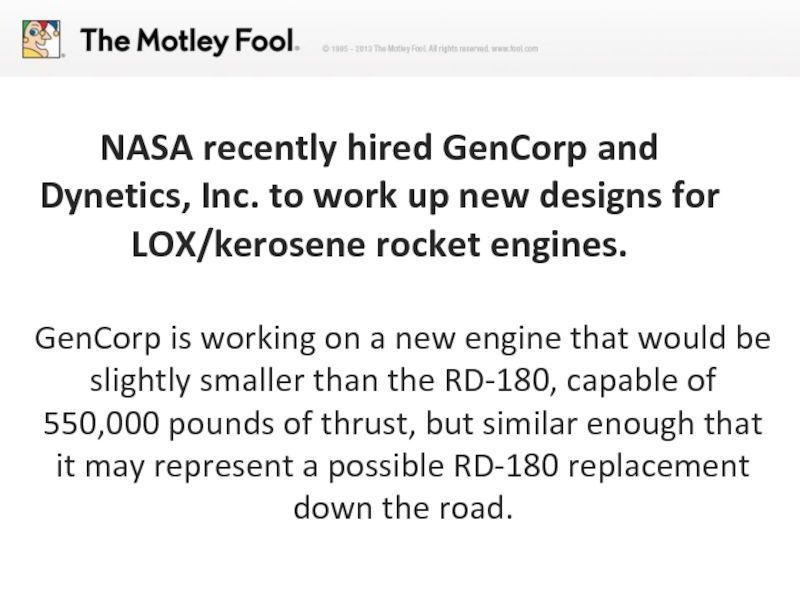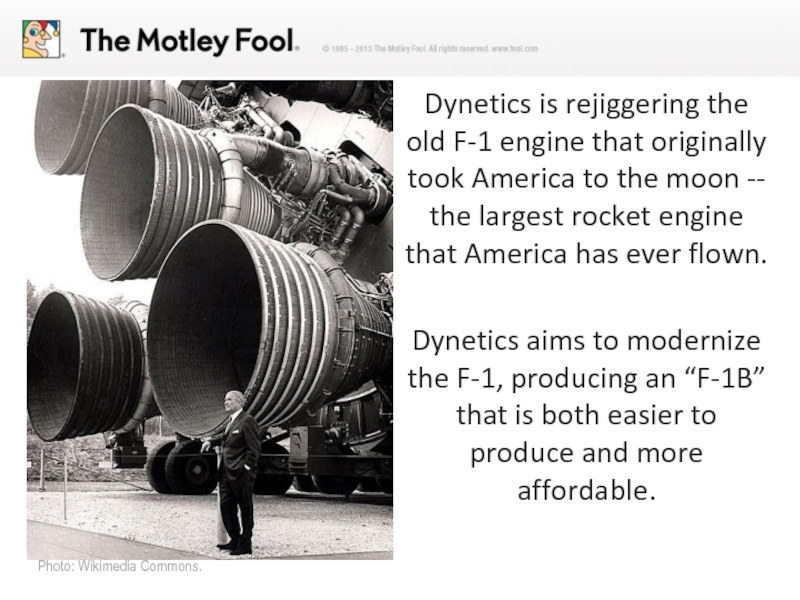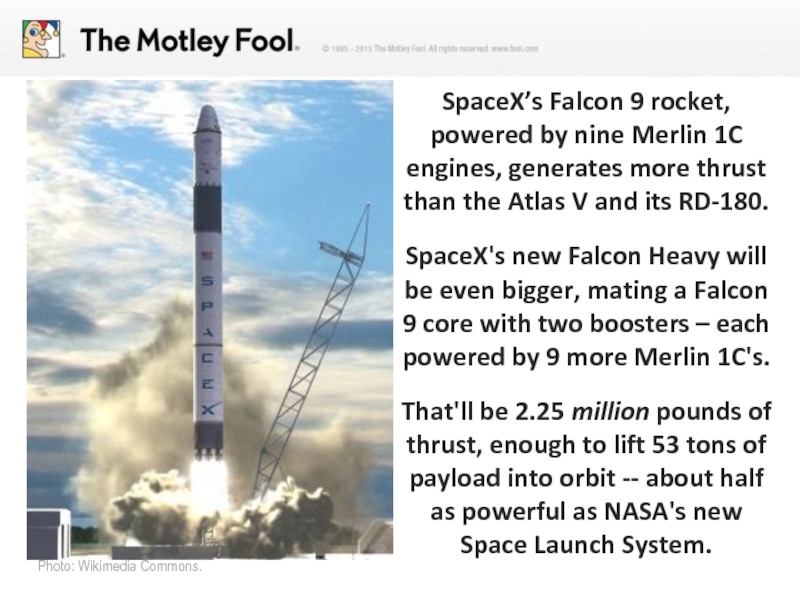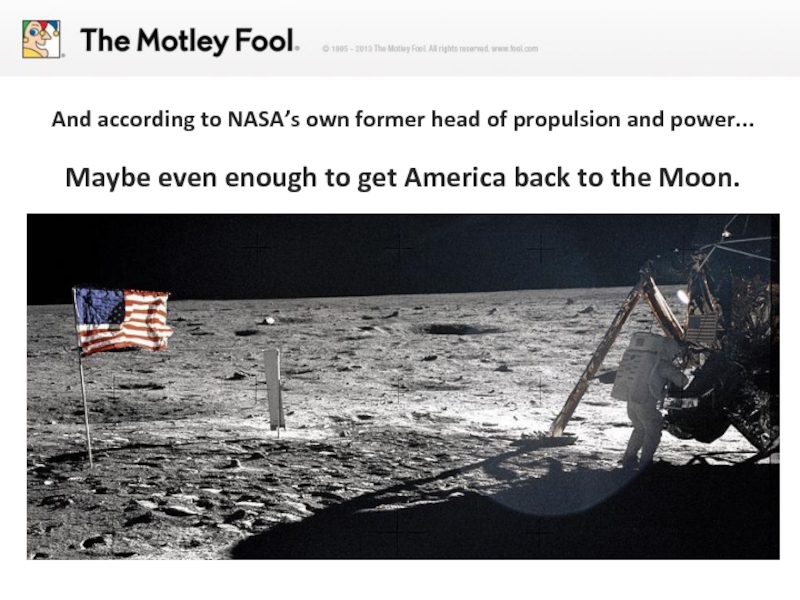Once upon a time, America built, powered, and launched its own rockets. Photo: Wikimedia Commons.
- Главная
- Разное
- Дизайн
- Бизнес и предпринимательство
- Аналитика
- Образование
- Развлечения
- Красота и здоровье
- Финансы
- Государство
- Путешествия
- Спорт
- Недвижимость
- Армия
- Графика
- Культурология
- Еда и кулинария
- Лингвистика
- Английский язык
- Астрономия
- Алгебра
- Биология
- География
- Детские презентации
- Информатика
- История
- Литература
- Маркетинг
- Математика
- Медицина
- Менеджмент
- Музыка
- МХК
- Немецкий язык
- ОБЖ
- Обществознание
- Окружающий мир
- Педагогика
- Русский язык
- Технология
- Физика
- Философия
- Химия
- Шаблоны, картинки для презентаций
- Экология
- Экономика
- Юриспруденция
A Quick Primer On Rocket Engine Technology – in Just 20 Quick Slides презентация
Содержание
- 1. A Quick Primer On Rocket Engine Technology – in Just 20 Quick Slides
- 2. This here is Russia’s RD-180 rocket engine
- 3. Note, though, that the RD-180 is just
- 4. But you can't just switch out an
- 5. That adds time to our list of
- 6. And that's just for starters. On most
- 7. As a general rule, most space launches
- 8. Speaking of solid fuel, there are two
- 9. Trivia: Used to be, a
- 10. The RD-180 burns liquid fuel -- LOX
- 11. At present, the U.S. has no equivalent
- 12. And that, in a nutshell, is why
- 13. If we want to continue using
- 14. Otherwise, we simply have to design
- 15. Longer term, the solution may
- 16. NASA recently hired GenCorp and
- 17. Dynetics is rejiggering the old F-1 engine
- 18. SpaceX’s Falcon 9 rocket, powered by nine
- 19. And according to NASA’s own former head
- 20. The Economist compares this disruptive invention to the
Слайд 1A Quick Primer On Rocket Engine Technology – in Just 20
Слайд 2This here is Russia’s RD-180 rocket engine -- the one that
Of course, that's just what Russia is objecting to.
Photo: Wikimedia Commons.
Слайд 3Note, though, that the RD-180 is just an engine. It's not
What RD-180 is used for, is to power the first stage of liftoff for this bad boy, Lockheed Martin's Atlas V launch vehicle.
Photo: Wikimedia Commons.
Слайд 4But you can't just switch out an RD-180 and swap in
That's why, even though two of these RS-25 "Space Shuttle" engines generate a combined thrust nearly equal to the RD-180's, they can't do the same job of powering the Atlas V.
Photo: Wikimedia Commons.
Слайд 5That adds time to our list of problems. Take away the
What you really want is a new rocket engine as nearly equal as possible to the RD-180 in size, power, and performance, so that it can replace the RD-180 on the Atlas V.
Photo: Wikimedia Commons.
Слайд 6And that's just for starters. On most space missions, you want
Each should burn its fuel as quickly as possible, then be jettisoned, to shed weight so that the next stage doesn't have to carry it.
Photo: Wikimedia Commons.
Слайд 7As a general rule, most space launches these days operate in
They burn their fuel first, are dumped quickest, and are sometimes referred to as "stage zero".
Photo: Wikimedia Commons.
Слайд 8Speaking of solid fuel, there are two main types of fuel
As a general rule, solid fuels are easier to transport and use. They're built into the rocket engine, which therefore doesn't have to be "fueled" before launch.
Photo: Wikimedia Commons.
Слайд 9
Trivia:
Used to be, a solid fuel rocket engine would be lit,
But some modern solid fuel rocket engines can be throttled down, much like liquid-fueled rocket engines.
“The more you know...”
Слайд 10The RD-180 burns liquid fuel -- LOX and kerosene. Another liquid
GenCorp's RS-68 rocket engine, which powers Boeing's Delta IV, uses LOX and LH2 propellants.
Liquid-fueled engines tend to give better performance, and burn fuel more efficiently. As a rule, it takes less weight in liquid fuel to do an amount of work equal to what a solid-fueled rocket engine could accomplish.
.
Photo: Wikimedia Commons.
Слайд 11At present, the U.S. has no equivalent to Russia's RD-180 and
Also, the RS-68’s different propellants mean it can’t directly replace the RD-180.
Photo: Wikimedia Commons.
Слайд 12And that, in a nutshell, is why America needs to design
We simply don't make a big, LOX/kerosene engine capable of replacing the RD-180.
Rocketdyne's RS-27A and SpaceX's Merlin1C use LOX and kerosene for fuel, but you’d need several of these engines to generate the kind of thrust that a single RD-180 can generate.
Слайд 13 If we want to continue using the Atlas V as the
IF Russia agrees to keep selling us the engines, and
IF we’re willing to accept the risk that they’ll decide to stop selling them again sometime in the future.
Слайд 14 Otherwise, we simply have to design an “RD-180-like” replacement of our
Preferably one with similar thrust characteristics...
similar in weight, too...
and ideally, using LOX and kerosene for fuel.
Слайд 15 Longer term, the solution may be to move away from Atlas
And in fact, we’re working on that.
Слайд 16 NASA recently hired GenCorp and Dynetics, Inc. to work up new
GenCorp is working on a new engine that would be slightly smaller than the RD-180, capable of 550,000 pounds of thrust, but similar enough that it may represent a possible RD-180 replacement down the road.
Слайд 17Dynetics is rejiggering the old F-1 engine that originally took America
Dynetics aims to modernize the F-1, producing an “F-1B” that is both easier to produce and more affordable.
Photo: Wikimedia Commons.
Слайд 18SpaceX’s Falcon 9 rocket, powered by nine Merlin 1C engines, generates
SpaceX's new Falcon Heavy will be even bigger, mating a Falcon 9 core with two boosters – each powered by 9 more Merlin 1C's.
That'll be 2.25 million pounds of thrust, enough to lift 53 tons of payload into orbit -- about half as powerful as NASA's new Space Launch System.
Photo: Wikimedia Commons.
Слайд 19And according to NASA’s own former head of propulsion and power...
Maybe even enough to get America back to the Moon.
